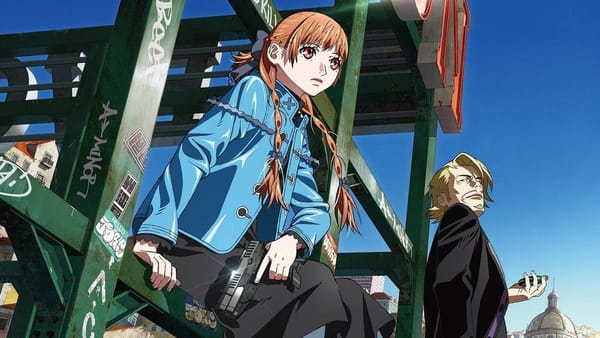Daily Dracula X - Stage 1: Dinner of Flames
Birthplace of Tragedy
Stage 1: Dinner of Flames
Despite the intense visuals of a ruined village in flames, a very gentle opening level introduces Richter, his controls, and the basic layout of a Castlevania stage. Rather than giving an explicit “tutorial” sequence to introduce itself, Dracula X elegantly communicates its mechanics through a simply designed opening stage.
Music: Divine Bloodlines
Another benefit of the CD format was the ability to use pre-recorded CD-quality music rather than music synthesized by the console. Konami had one of the best sound teams in video games at this time, and as such, Rondo of Blood features a memorable CD soundtrack full of revisited Nintendo-era ear worms.
This song is thought of as Richter’s theme, and it is used as such in Super Smash Brothers Ultimate.
Scene 1
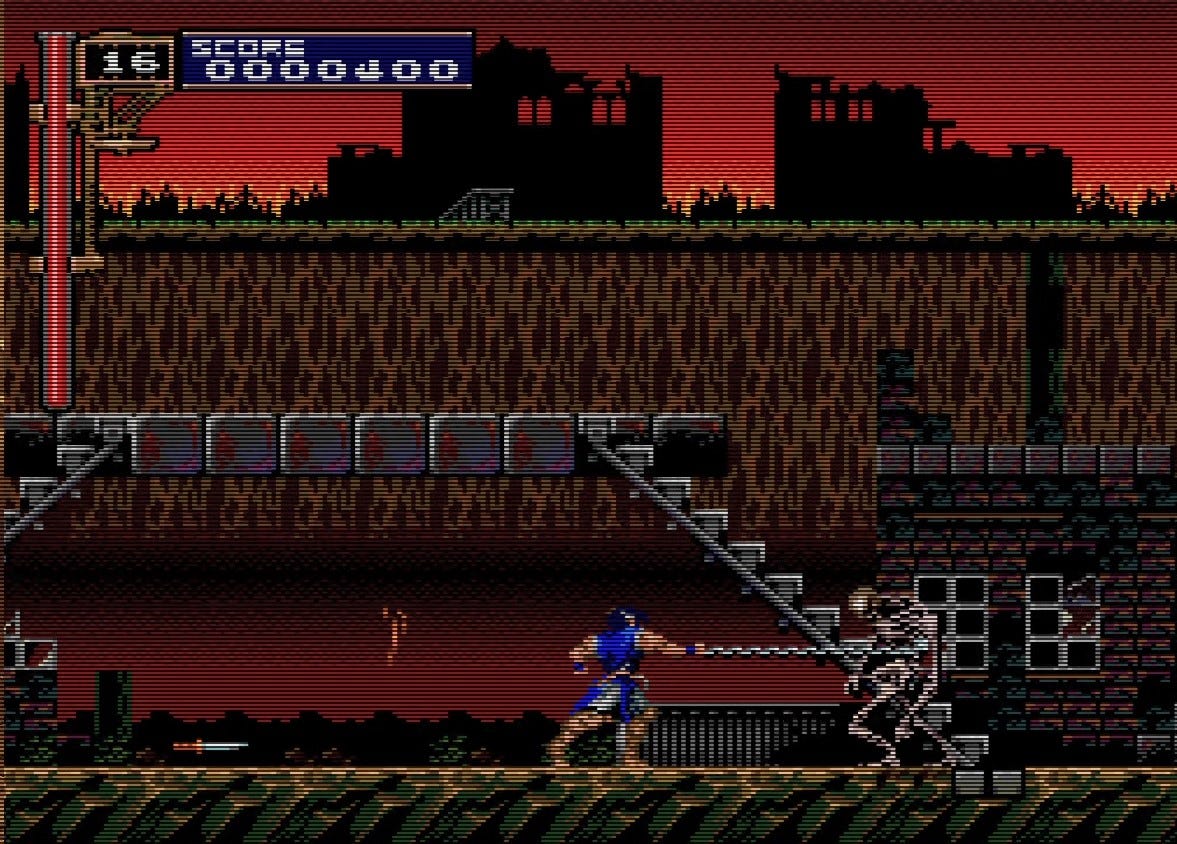
A straight path with candles to whip for items, skeletons who don’t fight back, and a set of stairs to climb (hold the up direction around them) if you get curious.
Here you’re given plenty of time to try out attacking, sub-weapons (hold up and press the attack button), and anything else about controlling Richter.
Sub-weapons are a big part of Castlevania’s strategy. The Belmont family whip only goes so far in a straight line, so Richter uses a small arsenal of other weapons to hit enemies at different ranges. Hold up on the d-pad— note the animation of Richter readying himself when you hold— and press the attack button to use them; they consume the hearts that you pick up from candles throughout the level.
There is an element of strategy to choosing the right weapon for the right situation, and this game will offer you the “wrong” weapon sometimes to keep you on your toes.
Why are there candles hanging in mid-air, and why do they produce ammunition and money? The same reason you can find pot roasts inside brick walls; it’s a video game. Go with it.
For this stage— and indeed, for much of this game— I recommend sticking with the axe. Each of the weapons has its own specialty use case, but the axe is the most versatile. Its wide arc will easily take care of distant and overhead enemies, which are the only kind you need to deal with in this stage.
Scene 2

The game introduces a very slight amount of danger. Did you learn to climb stairs in the last screen? If you didn’t, you’re now required to climb this staircase to progress. (Hold the up direction to make Richter walk a staircase.) Wait too long at the beginning of the stage, and this gorilla-like skeleton up top will throw a flaming barrel at you. This is probably a Donkey Kong joke, and if you expect the skeleton to throw the barrel down the stairs… nope, he throws it right in front of himself, just as you make it to the top.
At the end of the video here I press the wrong button and accidentally use an “item crash”, a big attack with a sub-weapon that consumes a lot of hearts. The axe item crash creates a huge ring of axes around Richter that fly outwards.
Scene 3
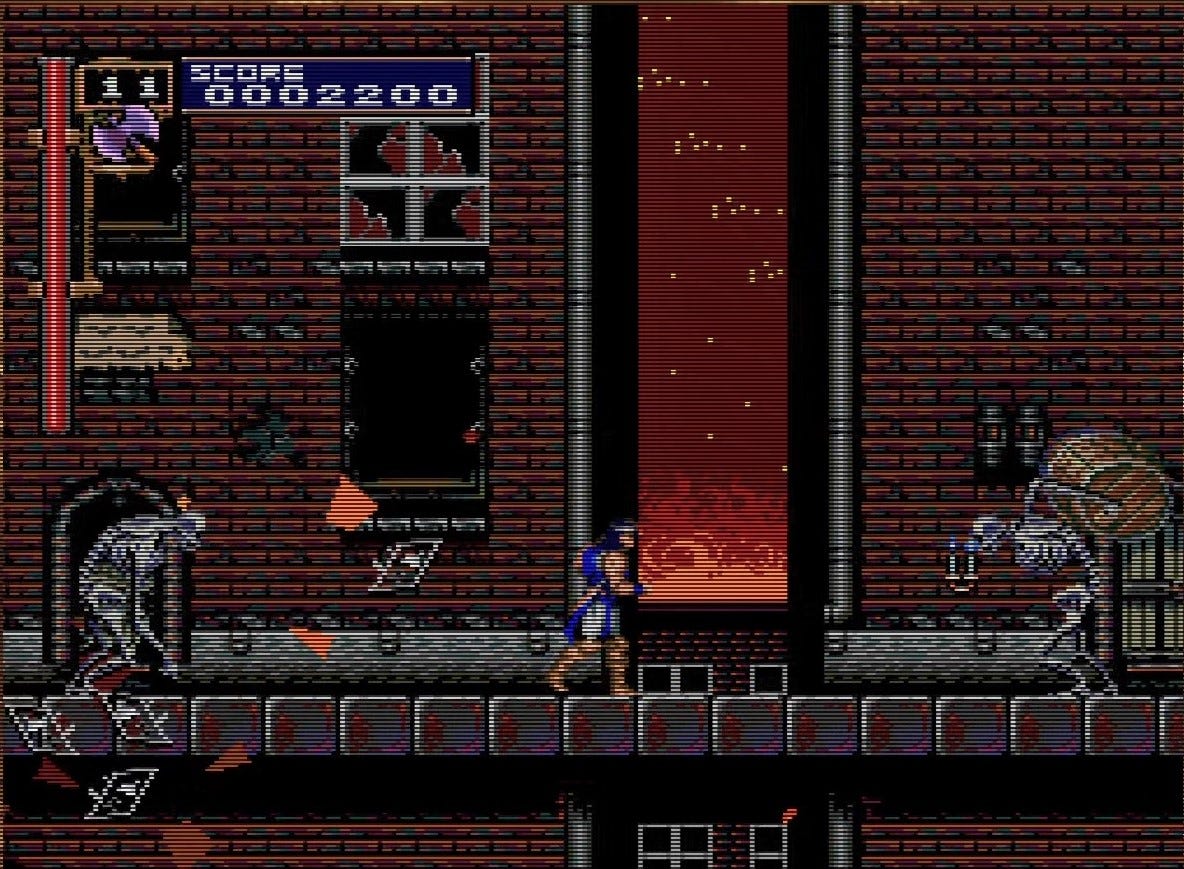
The game is now attacking in earnest, and it does so in style: enemies ambush you by crashing through windows as you pass by destroyed homes.1
We get a little more time with the barrel-throwing skeletons here: this time you’ll have to wait for them to throw their barrel and jump over it as it rolls on the ground. In the video I use Richter’s backflip (face away, hold down, double-tap the jump button) to get some extra height.
Towards the end of this stretch we run into a ninja skeleton who’d be some trouble if I didn’t time my axe to hit him the moment he appeared. Ninja skeletons run towards you and strike with tricky, evasive moves. Try to take them out from a distance.
Note the breakable blocks: this is standard for Castlevania, which long ago programmed players to check if they could break square blocks for goodies.
Scene 4
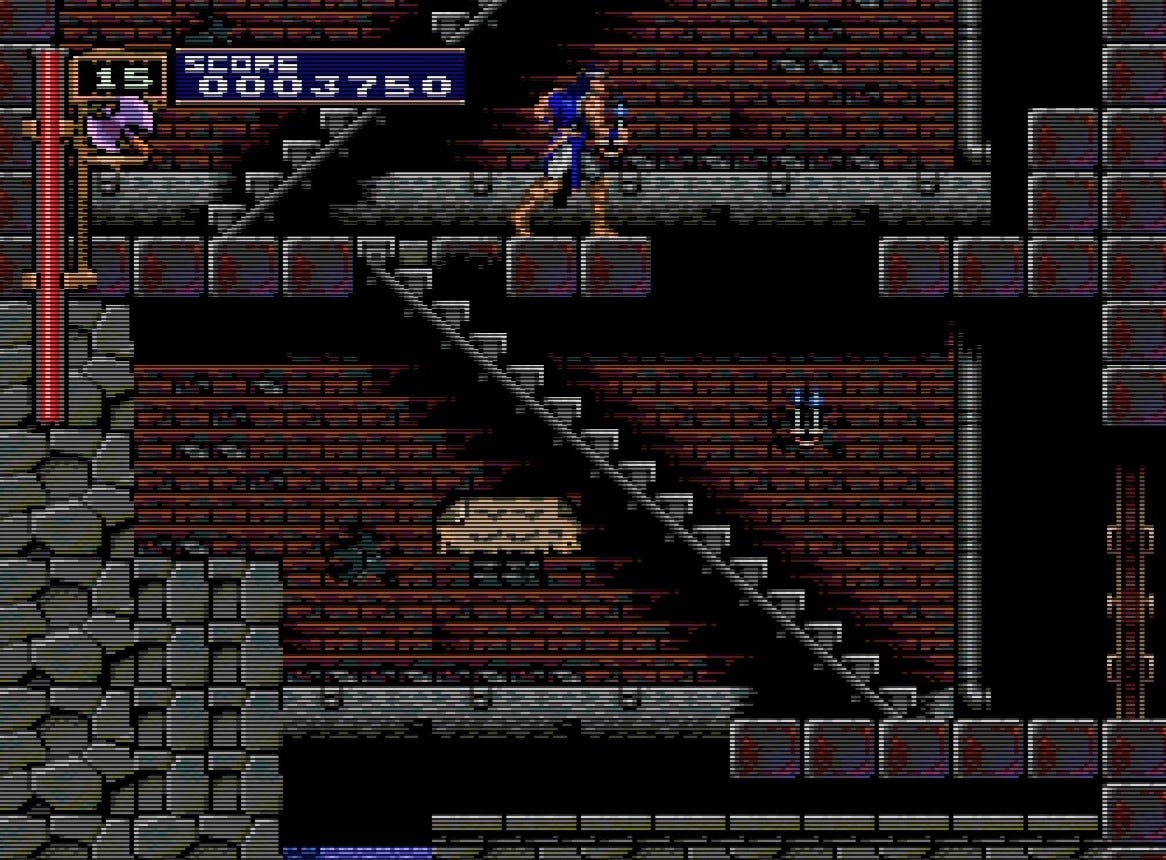
An break room to catch your breath in.
We don’t yet take it, but there’s a branching path here. Break down the walls on the bottom left side of the stage and you’ll find yourself in a different place. You’ll have to wait until tomorrow to hear about it. This time we’re taking the door.
One of Rondo of Blood’s big twists on the series formula is the way many of its stages branch off into alternate paths that lead to alternate, more difficult stages. You need to finish 8 basic stages to beat the game, but there are actually 13 stages in total. To get the best ending, you need to rescue all of Dracula’s hostages, and to do that you must explore the alternate stages. Since this game has a save function— most classic Castlevanias must be finished in one sitting!— you can go back and forth between stages to find routes you might have missed until the game shows you that precious 100% completion stat.2
Arguably, these branching paths, and their associated backtracking, are a precursor to the free-roaming exploratory format that Symphony of the Night introduces.
This scene is the first incidence of a classic Castlevania moment: breaking a wall and finding delicious meat inside. Meat heals your wounds, just like in real life.
Scene 5
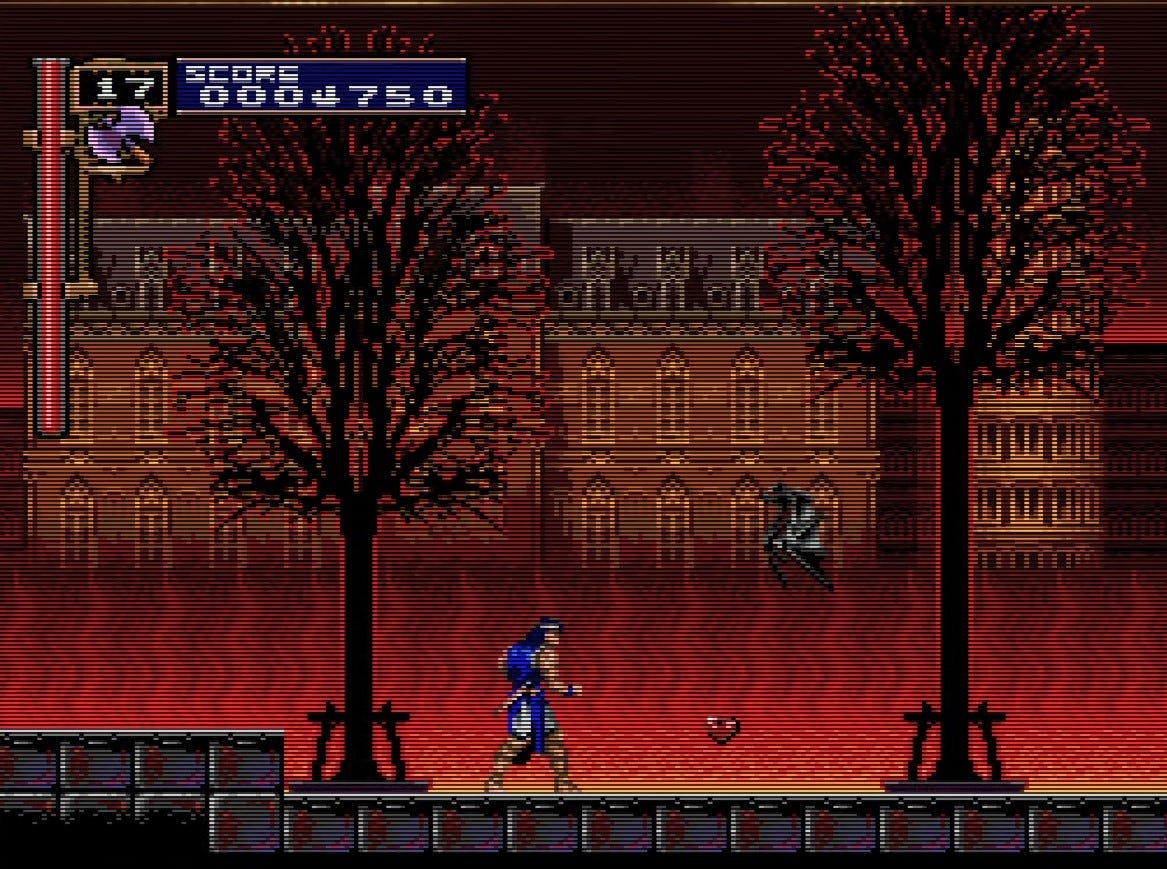
Having attacked us lightly, the game now introduces us to the concept of a “boss” enemy, one who takes a lot more damage to defeat than a normal foe and who packs powerful attacks that we have to skillfully dodge to stay alive.
But before that, bats. Castlevania is fond of these and other flying enemies: Richter’s whip hits in a very specific straight line, and if you don’t time your hit just right, a bat can fly right over it and hit you in the face. And they will, trust me.
I recommend a trick which will serve you well throughout the game: press the attack button to whip and quickly— while the whip has just extended— hit the down button to crouch. This “fuzzy whip” effectively expands the area you’re attacking by sliding the whip down while it’s out.

As for the “boss”— or more specifically, what we call a “mid-boss”— that’s this golem fellow. If we don’t approach him recklessly and just watch his attacks, he doesn’t pose any kind of threat.
We must hit the golem in the upper body to do damage; note the flashing. He has two attacks: one is to shake a bit and then punch high. So long as we pay attention to the cue, we can just stand where we are and wait him out safely. The other move is a set of fireballs: we need to move back a bit and either whip the fireballs or step through when we have space.
This is the game’s way of teaching us how boss fights are going to work going forward. They are pattern-based encounters, and using simple pattern recognition— recognize the boss’ warning, anticipate and dodge their attack, and then counterattack-- we can defeat any boss up to and including Dracula himself. The whole thing is a process of trial and error.
Boss: Dragon
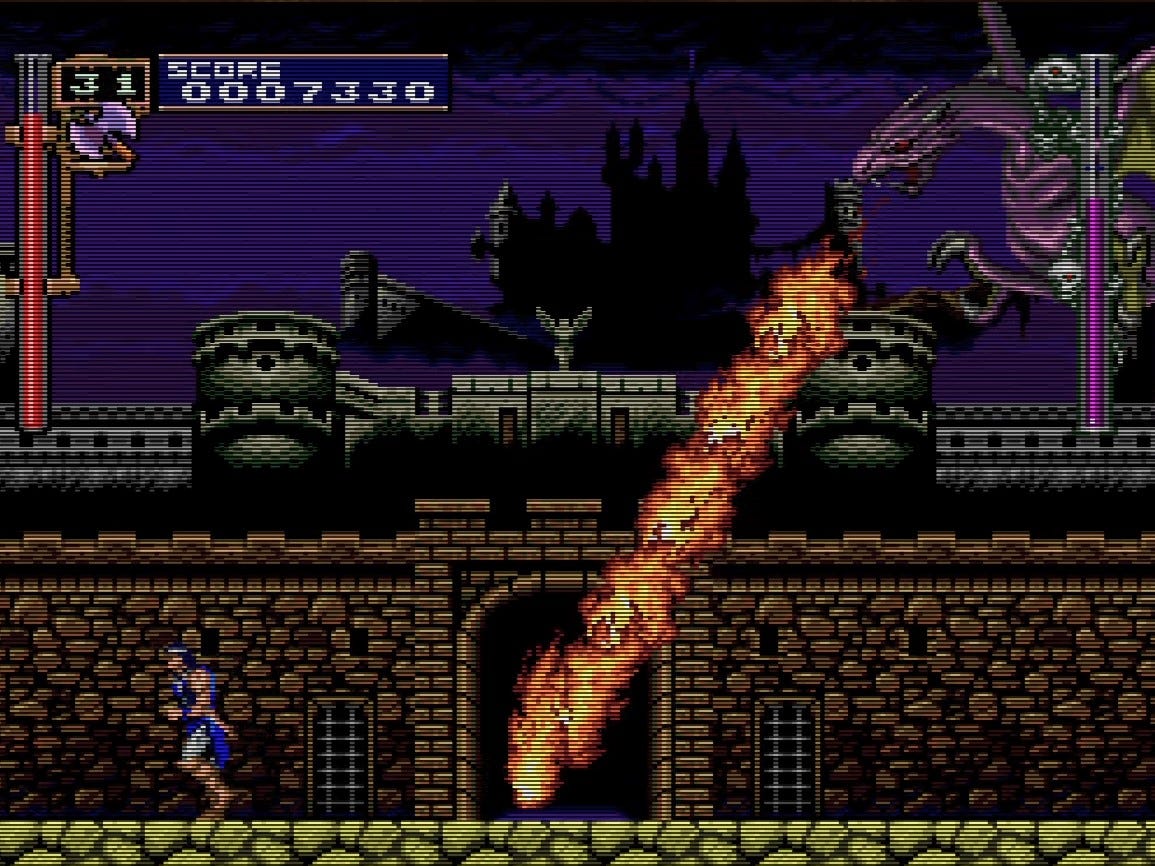
You’ll get used to this creepy, anticipatory music as a clear sign that a boss fight is coming up.
I love the way many of the bosses in this game are shown actually approaching from the background, and that delightful moment of anticipation and dread that it creates.
However, like everything else in this stage, the dragon boss is not something to be afraid of. Just like in the last room, this is a case of recognizing simple patterns and reacting appropriately.
The dragon flies overhead, so if you brought the axe with you it should be trivial to maintain an attack on him. You need to keep a medium distance and attack steadily: he’ll attack by diving down in a shallow arc, and you shouldn’t be standing anywhere near that area.
When the dragon’s had enough of that, he’ll stop and strike a pose that indicates he’s going to breathe flames at you. Get as far away from him as you can manage, watch the explosion as it happens, and calmly walk away from or underneath the flames as you have to.
Stage clear
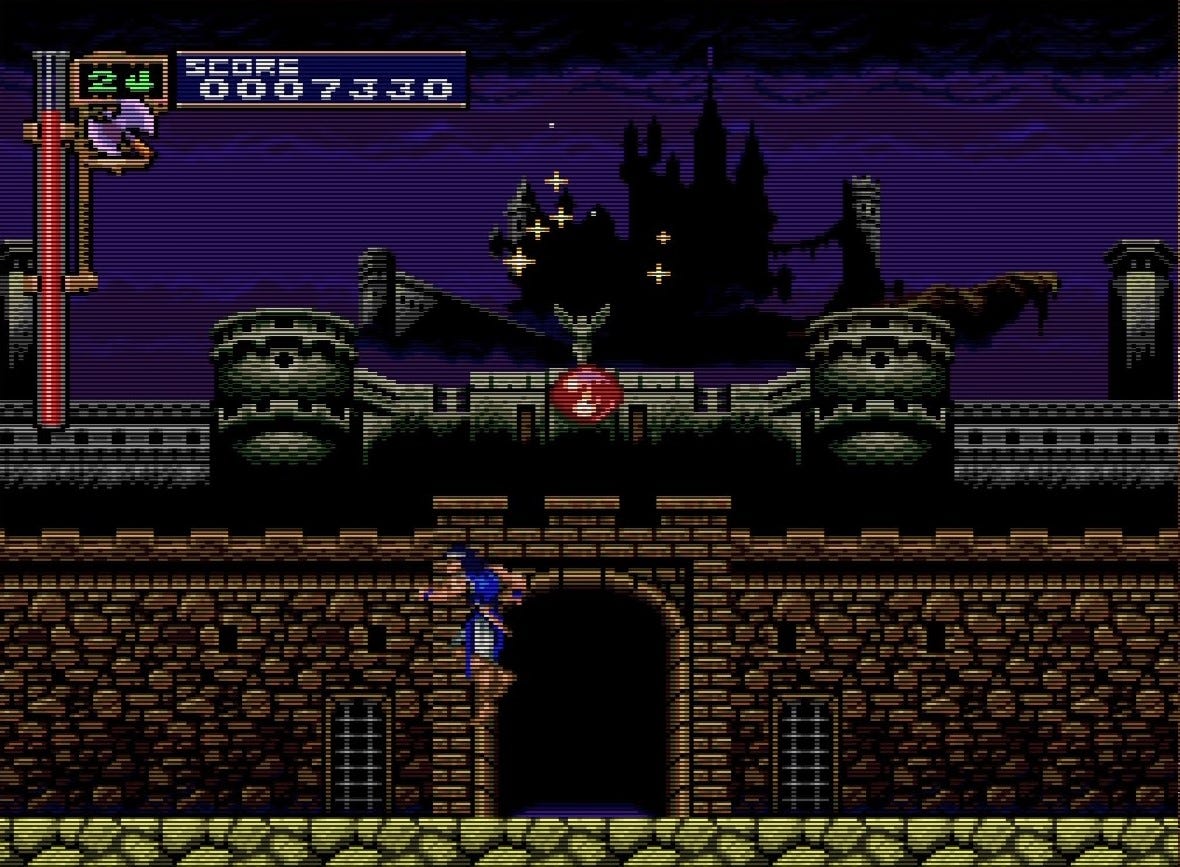
Another series tradition is this jewel at the end of the stage. Grab it and you’re done! Catch it in the air if you feel like showing off; you deserve it.
Next time we’ll talk about the alternate path, but today there’s also an appendix about Richter’s backflip and how to use it. See you shortly, vampire killers!
Don’t think too much about the real-life plausibility of these maps, indeed of a village past a staircase suspended in mid-air. Tell yourself it’s just a video game. ↩
Released in 1993, Rondo of Blood might be one of the first video games to use the “100% completion” stat to motivate players to comb the game for every shred of content. To get 100% in Rondo you have to beat all the bosses, rescue all the hostages, and find every alternate area. There’s no reward but the number. ↩

